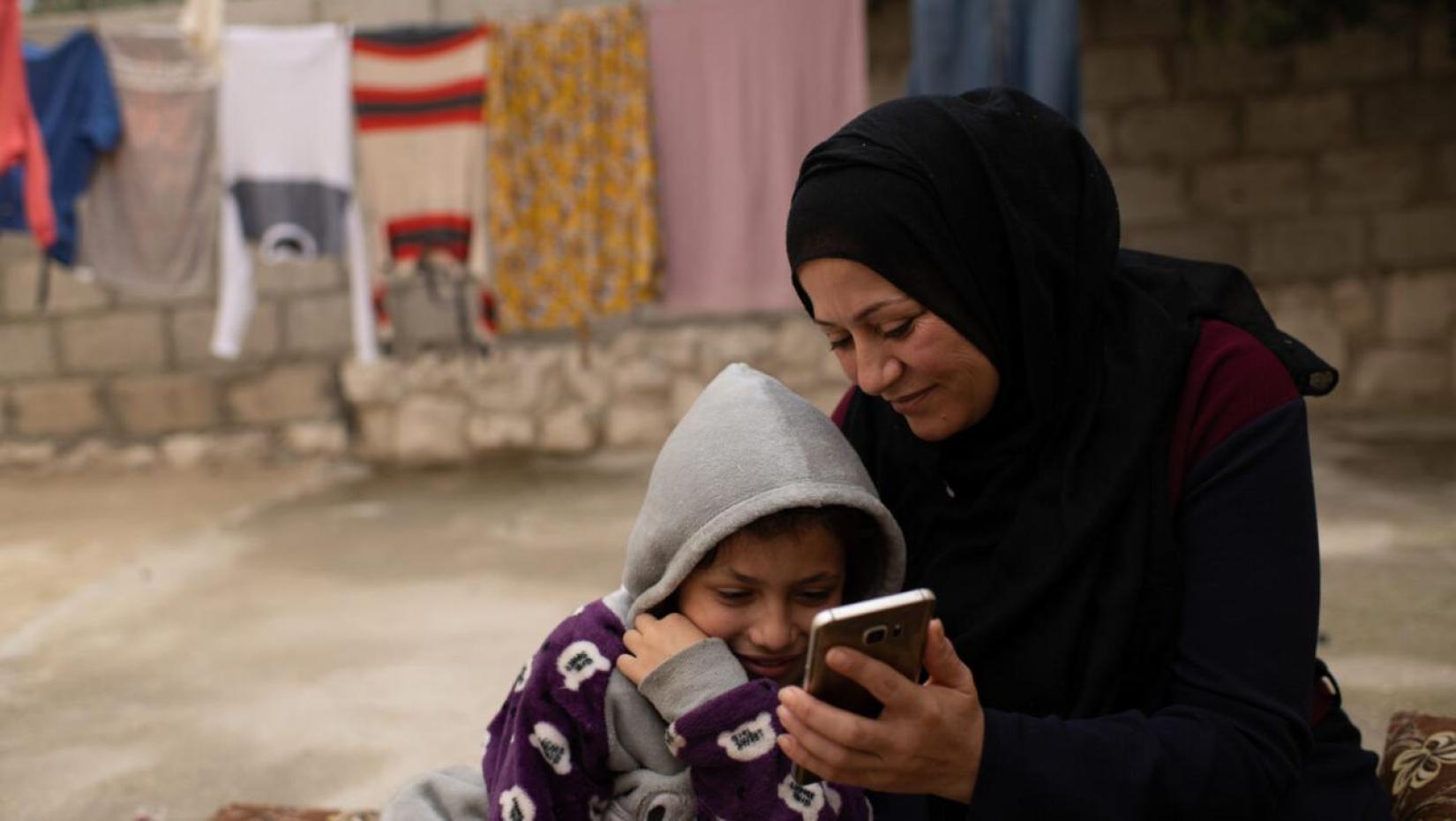64 percent of refugees in Jordan survive on less than 3 dinar a day
30 March 2022
Collaboration between UNHCR and the World Bank draws on wealth of new data about refugees in Jordan

New data released by UNHCR, the UN Refugee Agency, highlights the remarkable resilience of refugees, despite the impact of the COVID-19 pandemic. Evidence shows that the living conditions of refugees are improving, with most families generating their own income.

Despite this, most refugees remain on the brink of falling into poverty. 64 percent* of refugees currently living on less than 3JOD a day. In addition, 90 percent of refugee families say they employ at least one negative coping strategy, such as reducing food intake or buying household goods on credit, to get through their day to day.
“We stand at a crossroad of the refugee response in Jordan,” stated Dominik Bartsch, UNHCR Representative in Jordan. “The improving situation for refugees reflects the impact of our collective efforts over the past years, yet this can easily be reversed. Refugees remain vulnerable, and more needs to be done to support their self-reliance.”
The 2022 Vulnerability Assessment Framework (VAF) is a comprehensive and rich analysis of the refugee population in Jordan. Surveying over 10,000 refugee families, this analysis usually takes place every two years although the recent assessment was delayed due to the pandemic. Results are designed to monitor changes in refugee vulnerability over time, inform the delivery of humanitarian assistance, and support programs aiming to strengthen the self-reliance of refugees.
In addition, UNHCR Jordan and the World Bank MENA Poverty team collaborated to determine for the first-time monetary poverty among refugees in Jordan. Using the international poverty line of 5.5 dollars*, equivalent to about 3 dinar per day, the data shows that without assistance, three quarters of refugees would be poor. Thanks to assistance, the percentage drops to 64 percent.
“The released data in the VAF can be a powerful tool for evidence-based decision making to inform Jordan’s refugee response. Continued joint humanitarian-development analyses will utilize the new data to explore how to enhance the targeting efficiency of assistance, and thus its effectiveness,” stated Holly Benner, Resident Representative for the World Bank in Jordan.
For the first time, this year’s assessment has also examined the situation of refugees living in refugee camps. In comparison to the out of camp population, evidence shows that camp residents fare better in areas such as health and education but, due to a lack of employment opportunities, are more reliant on humanitarian aid. 52 percent of out-of-camp families report having access to income from work compared to 25 percent in refugee camps.
In both camp and out-of-camp settings, findings highlight that having one family member employed is not enough to meet monthly household needs. As a result, the number of Syrian refugee families holding debt, increased by 39 percent in comparison to 2018.
Increased debt is having a knock-on effect on standards of living. Refugees living in out-of-camp settings are increasingly resorting to living in unsafe homes in sub-standard conditions. Most refugees also have no written rental agreement and almost 20 percent of those surveyed received a threat of eviction in 2021.
On a more positive note, the benefits of including refugees in national systems can clearly be seen. 80 percent of refugee children have attended school over the last year - despite the challenges of remote education - while child labor remains minimal.
In the field of health, however, more needs to be done to ensure that the most vulnerable families are receiving the support they need. In comparison to 2018, there has been a 13 percent increase in Syrian refugees who needed medical care but were unable to access it.
In total, 760,000 refugees are currently registered with UNHCR in Jordan which constitutes the second largest proportion of refugees per capita in the world. Only 17 percent of refugees live in refugee camps, with the majority living in towns and cities across the Kingdom. This vast array of new evidence about the situation facing refugees in Jordan will help to inform not only UNHCR’s new multi-year strategy for 2023-2025, but also wider discussions on the next iteration of the refugee response in Jordan, ensuring support for the autonomy of refugees while continuing humanitarian assistance to the most vulnerable.





